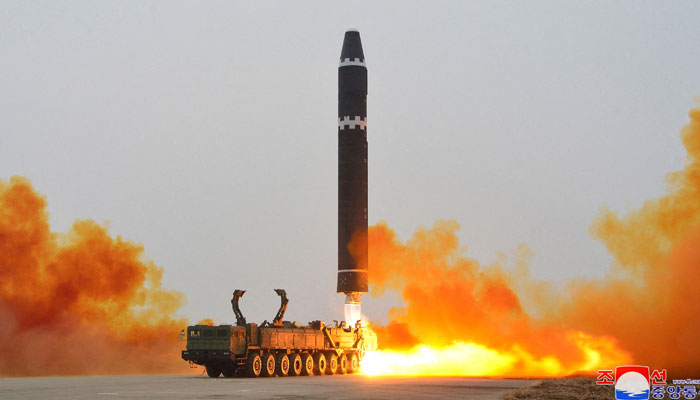North Korea fires ballistic missile, condemns US for escalating tensions
The missile was launched towards the sea off North Korea's east coast, and covered 570km
December 17, 2023

North Korea has fired a short-range ballistic missile, condemning US-led military activities and viewing the arrival of a US submarine in South Korea as a prelude to nuclear war.
The missile, launched towards the sea off North Korea's east coast, covered approximately 570km (350 miles) before landing in the ocean, as reported by the South Korean Joint Chiefs of Staff (JCS).
Amid warnings from Seoul and Tokyo about potential missile tests, including long-range intercontinental ballistic missiles (ICBMs), the launch raises tensions in violation of UN Security Council resolutions.
In response to the launch, South Korea's JCS stated, "North Korea's recent ballistic missile launch is a clear violation of the United Nations Security Council resolution, which prohibits the use of ballistic missile technology and scientific and technological cooperation."
North Korean state media swiftly released a statement from the defence ministry, criticising the US and South Korea for their military drills, displays of force, and nuclear war planning.
The statement specifically mentioned the presence of the US nuclear-powered submarine USS Missouri in South Korea, pledging that the DPRK's armed forces would neutralise attempts to instigate a nuclear war.
The spokesperson also condemned the second Nuclear Consultative Group meeting between South Korea and the US in Washington, accusing the allies of escalating tensions through increased military displays.
The launch triggered real-time information sharing between the United States, Japan, and South Korea, highlighting the operationalisation of a missile information-sharing system.
Although the missile fell outside Japan's exclusive economic zone, the incident further heightened concerns about North Korea's missile capabilities and defiance of international resolutions.











